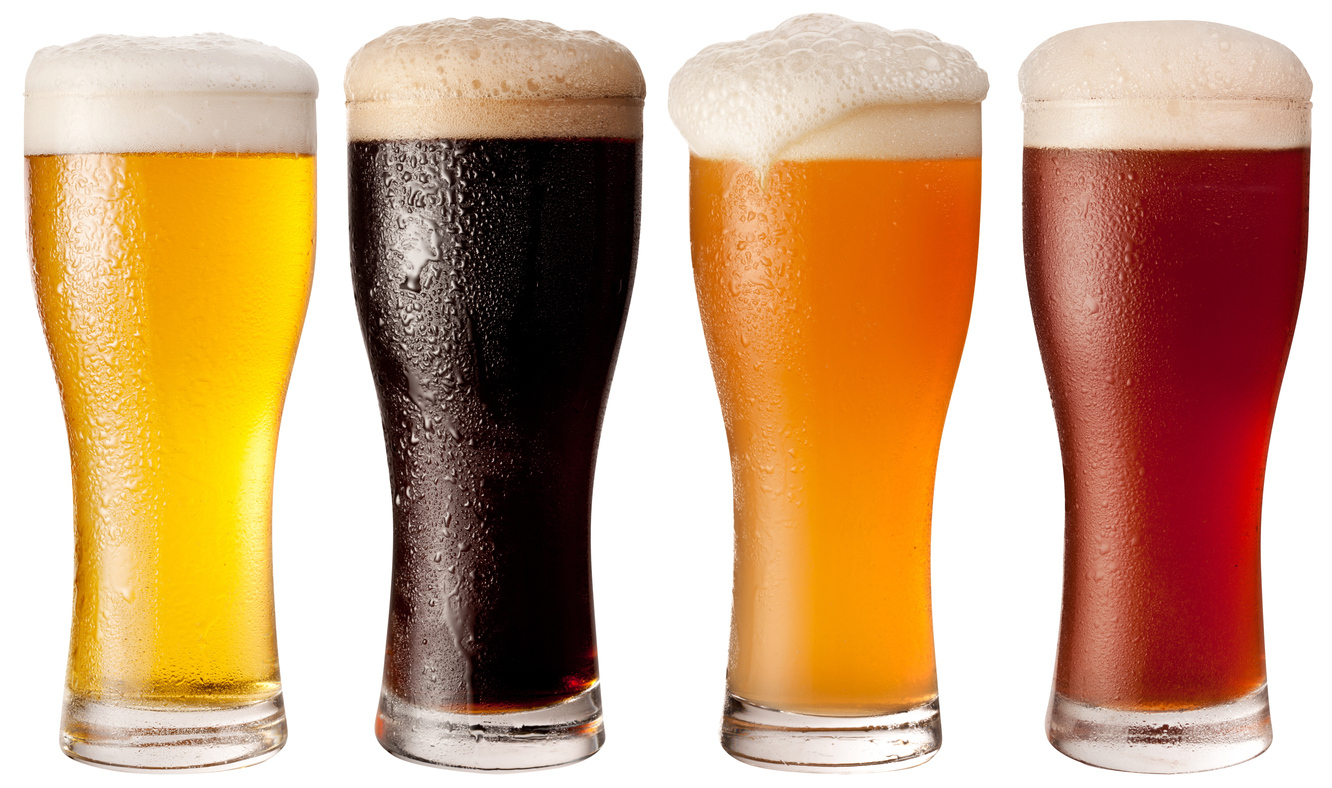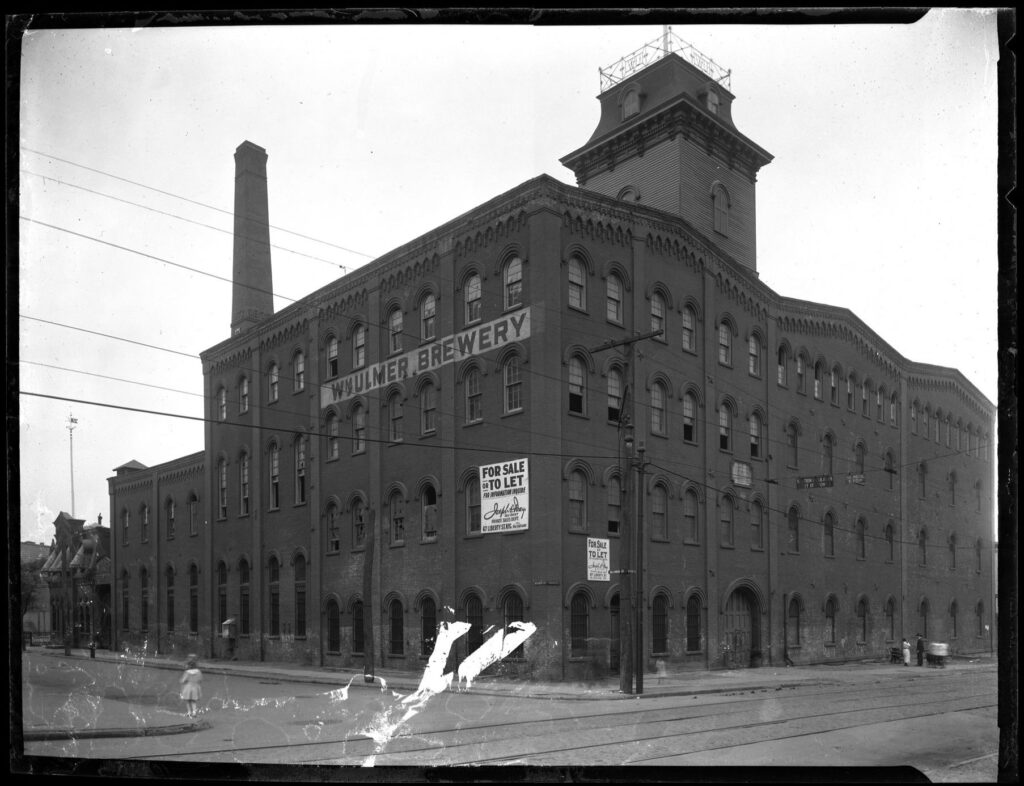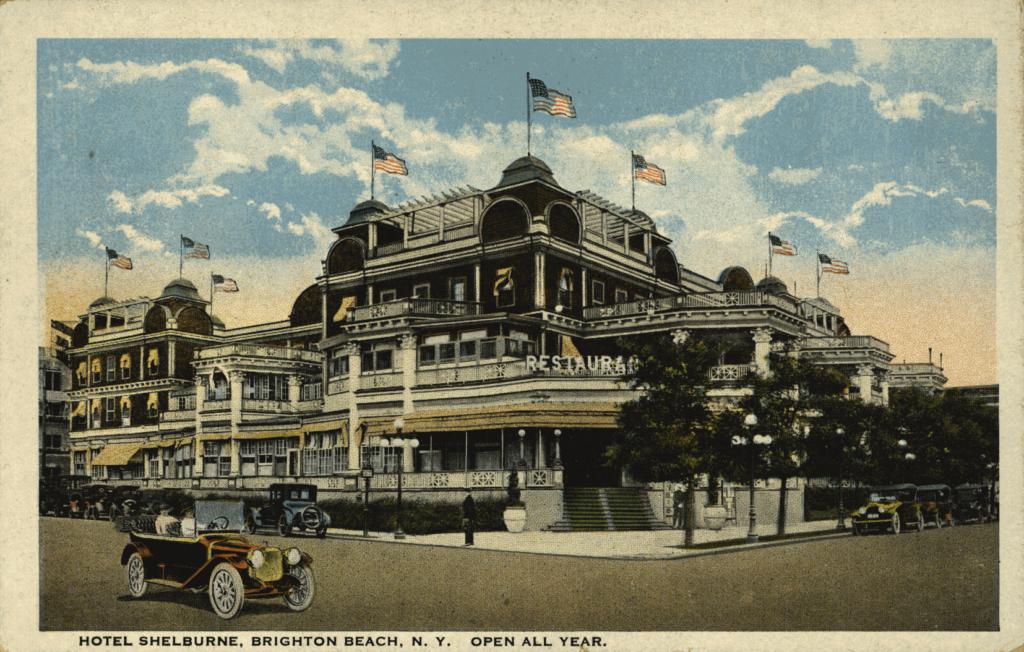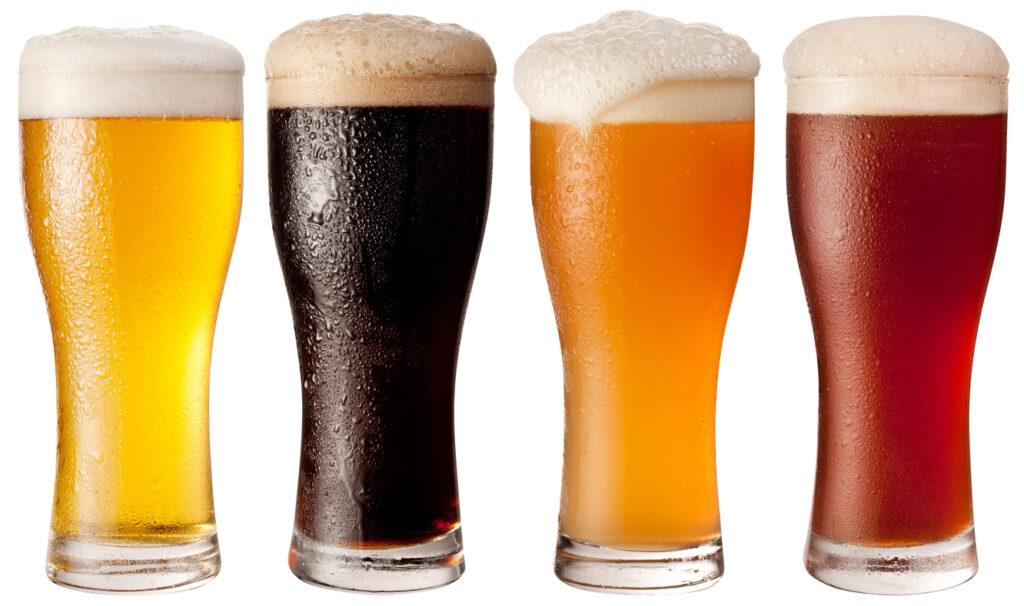
Tipsy in Brooklyn
Since the 1850s, brewing has been a major industry getting people tipsy in Brooklyn.
Beer has been foundational for Brooklynites and fellow New Yorkers for the longest time. In fact, many don’t realize that Brooklyn was the major force getting people tipsy in Brooklyn and the United States at large during the 19th Century. Brooklyn was considered the beer capital then. There were more than 50 breweries in Brooklyn, about half of which were in Bushwick.
Breweries were indispensable throughout all of history.
One reason for that was water quality wasn’t guaranteed to many, so fermenting drinks became a reliable way of hydrating the populace. Another is that beer is a good way to make money. But beer was particularly impactful during immigration waves to New York City during the 19th Century. Beer breweries were a response to the hustle culture of working-class immigrants. Indeed, beer made the trudge and toil of city life more bearable and colorful. From deep brown, amber, rusty red, and gold, we see the colors that never grow old.
People were getting tipsy in Brooklyn, but not from beer.
The beer industry had been suffering for a long time since the English immigrated to America. There were a number of reasons for beer not thriving here. The first setback was the lack of barley, which is important in the fermenting process. This was easily remedied by farmers. However, beer had more competition from rum and whiskey in America. Native Americans had their own fermented corn spirits. English brewers took note from the Native Americans and would experiment with ingredients such as corn, pumpkin, and spruce. This wouldn’t improve beer sales much. It was the Germans who would save beer in Brooklyn and the New World.
There are different approaches when it comes to brewing beer.
The type that the English were brewing would be generally classified as ale. The kind of beer Germans brewed were lagers. The difference lies in bottom vs. top fermenting. Ales are fermented at the top and are brewed at warmer temperatures. Additionally their brewing process is faster, so they can be imbibed sooner. Lagers on the other hand are bottom fermented at cooler temperatures. For about six to ten days the lager sits and the malt, yeast, and all of the flavors commingle.
English ales weren’t getting people tipsy in Brooklyn very well.
Though English ales brew faster than German lagers they have a flaw: their shelf life. When ales sit for too long they take on a bitter taste. Lagers on the other hand taste even better when they are aged because they have a higher alcohol content. When German breweries started getting people tipsy in Brooklyn, many realized that they preferred the welcoming, lighter taste of lager to ale.
Europe was torn apart by many horrors such as war, poverty, and persecution during the 19th Century.
Between 1820 and 1860, over 1.5 million Germans immigrated to the United States. They all arrived to New York City. Upon arrival, many German immigrants were impoverished. Thus they settled in neighborhoods where they could find work and affordable housing. Bushwick being an industrial area fit like a glove. Surely, the entrepreneurial spirit flourishes most in times of need.
Breweries have been a crucial industry throughout history.
Beer has eliminated sobriety and increased laughs for thousands of years, making it the preferred party drink. Beer is an especially prized and cherished commodity in German culture. This is why many of Bushwick’s breweries were founded by Germans. The renowned William Ulmer Brewery followed in this tradition.
The next time you find yourself tipsy in Brooklyn, thank William Ulmer and Anton Vigelius.
Indeed, these two entrepreneurial spirits made great strides in the beer industry. William Ulmer, a Germany immigrant, was one of the early settlers of Bushwick. In 1871, he and Anton Vigelius developed the Vigelius & Ulmer Continental Lagerbier Brewery. Vigelius decided to sell his share of stakes, making Ulmer the sole proprietor. Subsequently, it was rebranded as the William Ulmer Brewery.
In 1875 the Brooklyn Daily Eagle described William Ulmer Brewery as one of the larger operations as one in the area.
Ulmer Brewery needed more accommodations for brewing capacity and to streamline their techniques. Eventually the William Ulmer Brewery grew into the castle-like structure you can still see today. Ulmer Brewery was seen as a skyscraper at the time. The Eagle reported in 1886 it’s “not surpassed by anything of the kind on Broadway or Wall Street”. Additions would continue in four phases into the early 1900s, including a 236-barrel drum for brewing.
The William Ulmer Brewery is an eye-opening peer into the world before electricity.
It’s interesting to consider the building itself. There were no pumps, which require electricity, for moving contents from one area to another. The process was entirely reliant on gravity to move the beer from one level to the next. The contents would be moved through a series of levers and brakes. The building itself was a machine; a 19th Century scientific marvel.

The contents would stream through a total of seven levels.
Each level of the building was a crucial step in the lager brewing process. Malting is the first step and obviously would start at the very top level. Malting greatly determines the flavor, color, and body of the final product. The malted barley sprouts would then be released to the next level where they were kilned. Next comes the fermenting process, which happens in three steps.
There is a formula required to get people tipsy in Brooklyn.
The first step is primary fermentation, where sugar actively converts into CO2 aka alcohol. Next is diacetyl rest, which lasts for about three days. This is the stage where yeast produces a butterscotch or malty flavor. That sounds pleasant, but that isn’t the crisp flavor that brewers seek.
Lastly is the lagering stage.
This is when all of the malt, yeast, and proteins sink to the bottom and coalesce. This is the longest stage of the fermenting process. Temperature regulation is most critical during this stage. The temperature should be no higher than 40 degrees. This is why the lager vaults, the final layer, were built 30 feet underground.
By 1896 Ulmer was described as a millionaire and had a mansion on Bushwick Avenue.
He had several operations in Brooklyn and Queens. He had Ulmer Park in Gravesend, Brooklyn. Additionally, he had operations in Queens. He had facilities in Dexter Park, Woodhaven, and a beer pavilion in Forest Park. He was raking in the dough.
William Ulmer Brewery was successfully running his brewery and getting people tipsy in Brooklyn.
Anywhere from 40 to 50 breweries operated in Bushwick at the time. William Ulmer Brewery was one of the largest in all of Brooklyn. At its peak it was producing a staggering 3,200,000 gallons of beer per year. The beer industry would thrive for a while. But just as beer cups grow empty, all good things come to an end.
The Prohibition was undoubtedly a major blow to the beer and alcohol industries.
Some breweries foresaw the Prohibition by 30 years and made the necessary precautions to save their operations. This cannot be said for the Ulmer Brewery however. The stifling political climate forced the mighty William Ulmer Brewery to close its doors for good in 1920 unfortunately. This is far from the end of getting tipsy in Brooklyn however.
The Excelsior Brewing Company is a little known piece of Brooklyn’s brewing history.
Built in the 1890s, it was late to the brouhaha. Excelsior’s beer wasn’t particularly great. But they had a scheme to survive the Prohibition that is entertaining to recount. It was founded by the famous restaurateur, John Reisenweber. He was the creator of popular institutions at the time such as Reisenweber’s at Columbus Circle in Manhattan and the Hotel Shelburne in Brighton Beach. Having much success with his other ventures, he decided to try his hand at getting people tipsy in Brooklyn.

By 1920 the Prohibition came along and outlawed alcohol throughout the land.
A tactic that many breweries and Excelsior would use to circumvent Prohibition protocols was ‘near beer’. It was a drink that vaguely resembled beer, but had no alcohol or very little in it. It was not a hit. The Excelsior Brewing Company was floundering with oppressive Prohibition measures. But they continued producing the government approved “near beer” beer. John Reisenweber eventually put the brewing plant up for sale, but there were no takers.
Prohibition was in place, but people were still getting tipsy in Brooklyn.
In 1926 inspectors found outside of a garage across the street from the Excelsior facilities. They traced the pipe back to a tank in the factory that contained real beer. According to local legend a gangster by the name of “Legs” Diamond was responsible for this scheme and the dispersal of the good stuff.
After thirteen years it was finally legal again for people to get tipsy in Brooklyn.
Prohibition was enacted in 1920 and was repealed in 1933. In that time there was massive suffering for businesses and people. Obviously breweries and distilleries suffered, but so did entertainment venues and bars that sold their products. People suffered because of uneducated guesswork. Many would die from poorly fermented alcohols. Moonshine was infamous for this at the time. But with the repeal of Prohibition laws people were overjoyed to be able to brew and drink without consequences again. Breweries quickly picked up where they had left off and got to brewing the good stuff.
Bushwick has become a pilgrimage destination for getting tipsy in Brooklyn.
Beer tourists flock here for the density of beer establishments and said products. Tours were given of the William Ulmer Brewery building up to a few years ago. To many the most intriguing feature of the William Ulmer Brewery were the lager vaults located 30 feet below ground level. Though there were no longer any tours, the William Ulmer building held an art residency program for a few years. But its last show was held on April 22nd before a major renovation project is set to begin. Let’s hope that the historical charm of this building is preserved and that it can resume serving the community soon.
In the mean time, there are so many beer establishments to fill your belly and get tipsy at in Bushwick.
Independent breweries have taken off the last few years in particular. Beer fans tire of the standard, conglomerate brews offered in super markets. I am a heinny fan myself, but people have been yearning for a beer that is different for a while. Boy does Bushwick deliver with three breweries to choose from, beer gardens and pavilions.
Grimm Artisanal Ales
Specializing in sour beers, this is definitely a departure from super market brands. They offer oak-aged sour beers and gose, a sour German beer. This has to be a good place to get tipsy in Brooklyn.
Interboro Spirits & Ales
Claiming to be Brooklyn’s first craft brewery and distillery they certainly have a lot going on. Offering multiple types of delicious craft beers, whiskey, gin, amaro and more. This place is the Mecca of alcoholic beverages in Brooklyn.
Kings County Brewers Collective
Hailed as New York’s best new brewery by Thrilist a few years ago, Kings County Brewers Collective was the first brewery to set up shop in 2016 in Bushwick for 40 years. Zack Kinney, Pete Lengyel, and Tony Bellis have grand aims of being a piece of Bushwick’s rich brewing history. With such high aspirations the beer has to be good.
Brooklyn Beer Garden
A beer garden worthy of Bushwick’s artist community. Celebrating the graffiti mural art of the surrounding neighborhood, it doesn’t get much better than combining art and beer, does it?
The Rookery
A bar and live event venue with an old-time feel and aesthetic. They have quite extensive menu full of beers, wines, whiskeys, cocktails, and grub. If you are looking to get tipsy in Brooklyn, you definitely want to go here.
How deep and impactful is the history behind getting tipsy in Brooklyn.
Beer barons, secret beer-smuggling pipes, gangsters, malt, and time are the ingredients you need to brew up a story like Bushwick’s. Who would have thought that the William Ulmer Brewery was not just a building, but a massive, mechanical marvel? Many take for granted the significance of beer and its impact on our world. The breweries in Bushwick have taken the torch and keep it burning, honoring Bushwick’s and Brooklyn’s malted beverage heritage.
Here’s to getting tipsy in Brooklyn!

Read more about the William Ulmer Brewery:
https://en.wikipedia.org/wiki/William_Ulmer_Brewery
Read our latest article on the Brooklyn Half Marathon:
https://172-234-236-52.ip.linodeusercontent.com/the-brooklyn-half-marathon/

